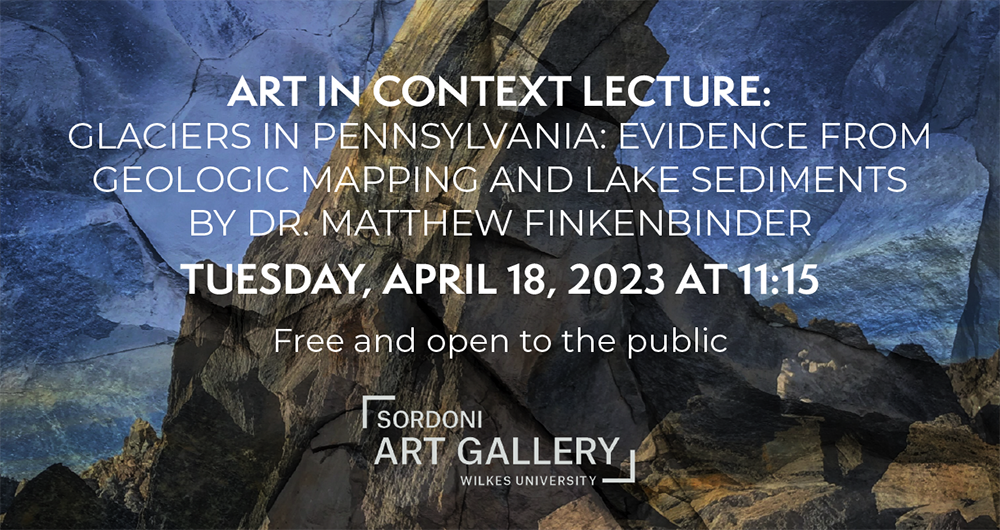Art in Context: Glaciers in Pennsylvania: Evidence from Geologic Mapping and Lake Sediments by Dr. Matthew Finkenbinder
TUESDAY, APRIL 18, 2023 | 11:15 a.m.
Pennsylvania has been partially covered by ice sheets at least four times during the last 2.6 million years. The most recent period of glaciation, the last ice age, had its peak around 21,000 years ago when parts of northwestern and northeastern Pennsylvania (NEPA) were ice covered. As the ice advanced and later retreated across NEPA, a series of landforms were created which allow geologists to reconstruct the timing and patterns of glacier movement. For example, glacier advance and erosion formed lakes and bogs, which have filled in with water and sediments. Glacier erosion, and later deposition, created other landforms that define the edge of the former ice sheet (moraine) and meltwater streams that created sand and gravel deposits (glacial outwash). Mapping the distribution of these landforms, and characterizing the deposits, provides insights into the glacial history of the region, while also providing information on the location of viable aquifers for drinking water supply, economic deposits of sand and gravel, and areas prone to landslides. In this talk, I will present a summary of two ongoing research projects that focus on different aspects of the glacial history of NEPA. First, I will present an overview of a sediment core record collected from Nuangola Bog in Luzerne County. The sediment record extends back to the time of ice sheet retreat across the landscape and records the timing of ice melt and the corresponding climate changes. Second, I will discuss a recent geologic mapping project in Pike County that I completed in collaboration with scientists at the Pennsylvania Geological Survey. This project involved creating a county-wide map of glacial landforms and sediments and, using various techniques, dating the age of the deposits to determine the timing of ice advance and retreat.
